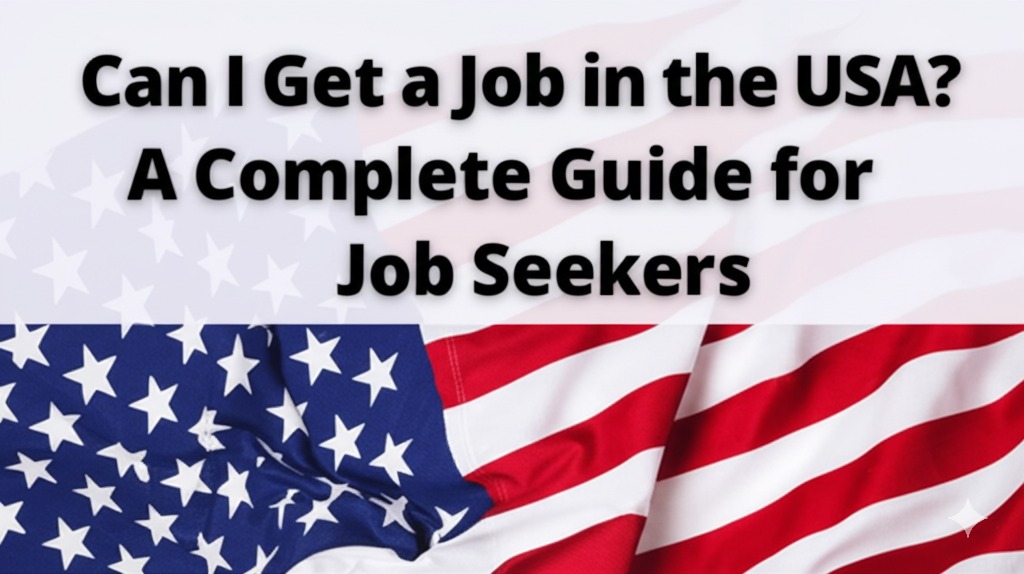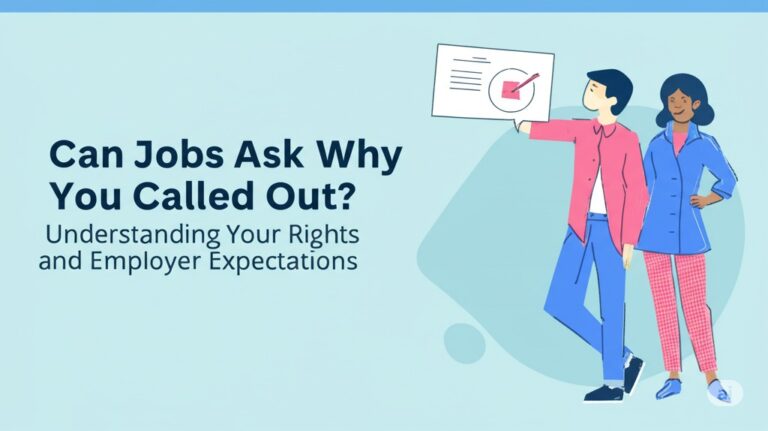
Finding a job in the USA can be both an exciting and challenging process, especially for those who are new to the country or considering a career shift. Whether you’re an international student, a foreign worker, or someone looking to explore new career opportunities in the United States, the question “Can I get a job in the USA?” often lingers. In this guide, we will break down the essential factors you need to consider, the steps to take, and how to optimize your job search for success.
Understanding the US Job Market
The Current Job Market in the USA
The US job market is vast, diverse, and constantly evolving. With over 160 million workers employed across various industries, opportunities are available for individuals with the right skills and qualifications. However, the competition can be fierce, particularly in certain fields.
Factors influencing job availability include:
- Economic trends: Industries like technology, healthcare, and e-commerce are booming, while others like retail and manufacturing are facing challenges.
- Geographic location: Certain states or cities may have more job opportunities in specific sectors. For instance, tech jobs are abundant in cities like San Francisco and Seattle, while healthcare jobs are concentrated in regions with large hospitals and medical centers.
- Skills in demand: Employers in the USA are often looking for highly skilled workers in fields such as software development, digital marketing, healthcare, and engineering.
Types of Jobs in Demand
To increase your chances of securing a job in the USA, it’s essential to understand which sectors are actively hiring. Some of the most in-demand jobs include:
- Software Developers: With the tech industry constantly advancing, software developers are in high demand.
- Nurses and Healthcare Professionals: The healthcare sector is experiencing rapid growth due to an aging population and ongoing medical advancements.
- Data Analysts and Scientists: With the rise of big data, companies across various industries are seeking professionals who can analyze and interpret complex data.
- Digital Marketing Specialists: As businesses continue to shift online, digital marketing expertise is highly sought after.
Legal Considerations for Working in the USA
Visa Requirements for Foreign Workers
If you’re not a US citizen or permanent resident, obtaining the right visa is crucial to working in the USA. Some of the most common visa types for foreign workers include:
- H-1B Visa: For individuals with specialized skills in fields like IT, engineering, or healthcare.
- L-1 Visa: For intra-company transferees working in managerial positions or with specialized knowledge.
- O-1 Visa: For individuals with extraordinary skills in fields such as the arts, sciences, or business.
Each visa has specific requirements, and the application process can be competitive, with limited spots available each year, particularly for H-1B visas.
Work Authorization for International Students
International students studying in the USA on F-1 visas can work under certain conditions:
- On-campus employment: Students can work up to 20 hours per week during the semester and full-time during breaks.
- Optional Practical Training (OPT): After completing their degree, students can work in the USA for up to one year in a field related to their studies. STEM graduates (Science, Technology, Engineering, and Mathematics) may qualify for a 24-month extension.
Green Card and Permanent Residency
If you’re aiming for long-term employment in the USA, obtaining a Green Card (permanent residency) is a significant step. There are several ways to qualify, such as through family sponsorship, employment, or the Diversity Visa Lottery. Green Card holders have the right to work and live in the USA permanently.
Steps to Increase Your Chances of Getting a Job in the USA
1. Tailor Your Resume and Cover Letter
In the US, the job application process starts with a resume and cover letter. These documents should be:
- Concise and focused: Tailor your resume to the job description and highlight relevant skills and experiences.
- Keywords optimized: Use industry-specific keywords that match the job posting to increase your chances of passing through Applicant Tracking Systems (ATS).
- Professional: Use a clean, easy-to-read format with clear headings and bullet points.
2. Network Effectively
Networking is key to finding a job in the USA. It’s often said that “it’s not what you know, but who you know.” Here’s how to network effectively:
- Attend industry events: Conferences, job fairs, and professional meetups are great places to connect with potential employers.
- Use LinkedIn: Build a professional LinkedIn profile and engage with professionals in your field.
- Connect with alumni: Many universities have alumni networks that can provide valuable connections and advice.
3. Prepare for Interviews
Once you secure an interview, you must be ready to impress. Here’s how to prepare:
- Research the company: Understand the company’s culture, products, and values.
- Practice common interview questions: Prepare answers for typical questions like “Tell me about yourself” and “What are your strengths and weaknesses?”
- Dress appropriately: In the US, dress codes can vary by industry, but it’s generally a good idea to dress professionally.
4. Leverage Job Search Engines
There are many online job search engines where you can find job listings in the USA. Some of the most popular platforms include:
- LinkedIn: Beyond networking, LinkedIn has a robust job search feature.
- Indeed: A comprehensive job search engine that allows you to filter results based on location, salary, and job type.
- Glassdoor: In addition to job listings, Glassdoor provides company reviews, salary information, and interview insights.
Common Challenges and How to Overcome Them
Visa and Sponsorship Issues
For foreign workers, one of the biggest challenges is securing a work visa or sponsorship. This process can be time-consuming and highly competitive. To improve your chances, target employers who have a history of sponsoring foreign workers, and ensure your resume is competitive for high-demand roles like those in tech and healthcare.
Cultural Differences and Workplace Norms
Understanding American workplace culture is important for success. Some key aspects include:
- Direct communication: Americans tend to value clear, straightforward communication.
- Work-life balance: Many US companies emphasize a balance between professional and personal life.
- Teamwork and individual initiative: US workplaces often encourage a combination of team collaboration and personal accountability.
Conclusion: Your Path to Working in the USA
While securing a job in the USA can seem daunting, the key is preparation. By understanding the job market, legal requirements, and networking effectively, you can significantly improve your chances of landing a job. Whether you’re pursuing a temporary position or aiming for permanent residency, the right approach, persistence, and adaptability will open doors to countless opportunities.

Andre Cuevas provides career insights, job search strategies, and professional advice to help individuals navigate the job market and achieve their career goals.





